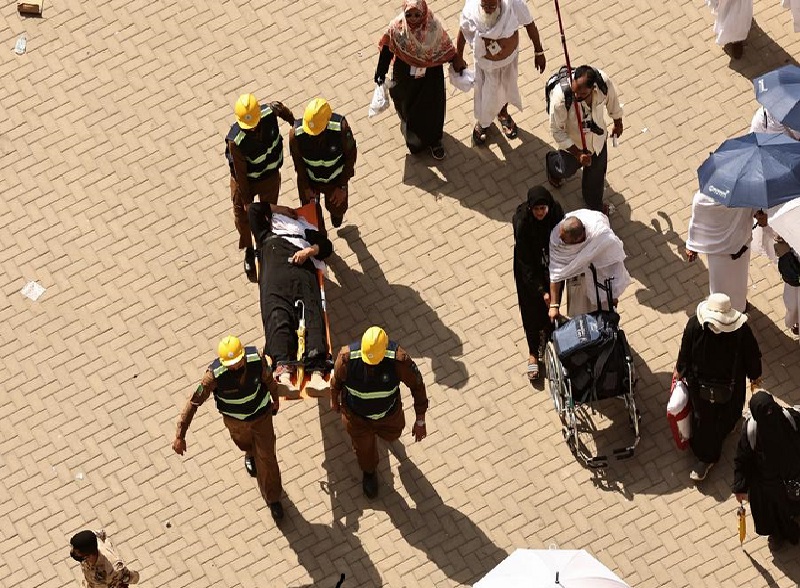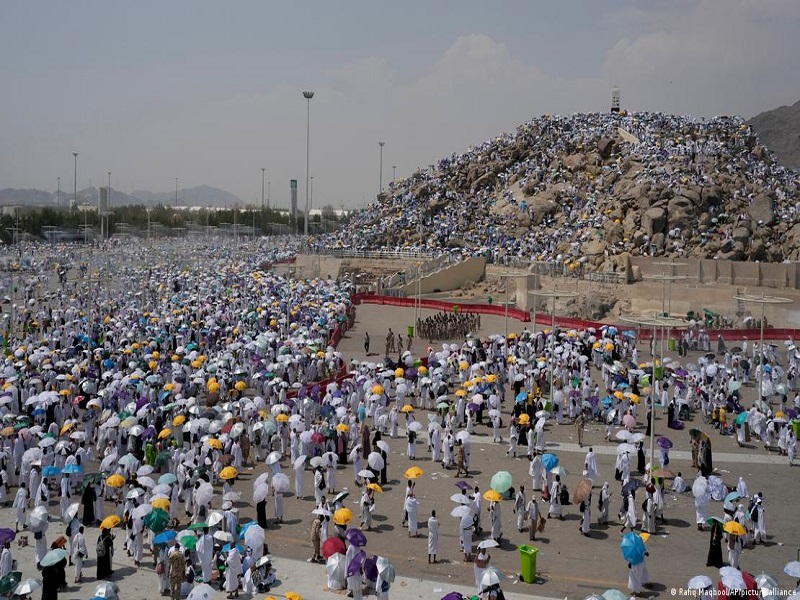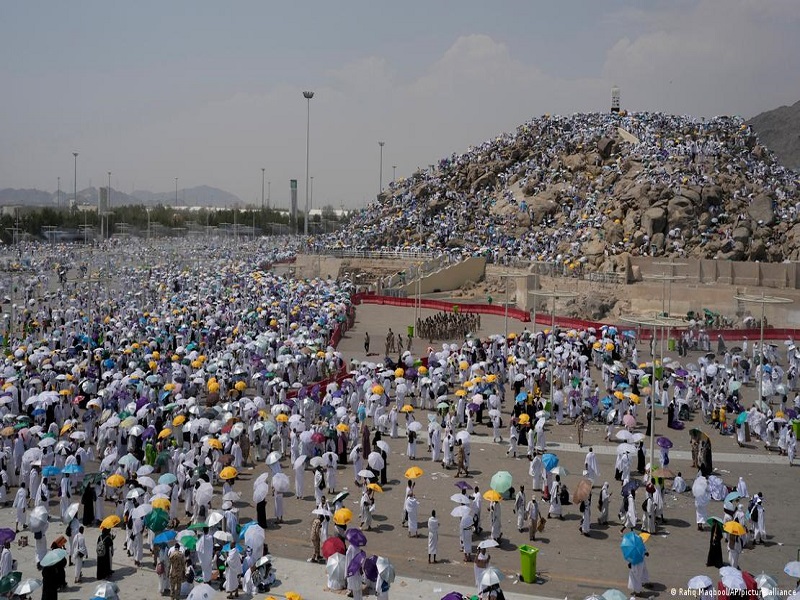In the wake of recurring Hajj tragedies, the pressing question remains: who is accountable for the loss of countless lives? This investigative piece delves into the complex web of responsibility, examining the roles of organizers, authorities, and pilgrims themselves. Join us as we uncover the truth behind these devastating incidents.
As the death toll rises, debate is raging over whether bad organization, weather or gate-crashing pilgrims are to blame for more than 1,000 reported deaths in Saudi Arabia during the annual Hajj religious gathering.
Arabic-language social media has been flooded this week with shocking images from Saudi Arabia. The pictures and videos show people who were undertaking their once-in-a-lifetime Muslim pilgrimage to Mecca collapsed on the side of the road or slumped in wheelchairs, apparently close to death or dead. They are dressed in traditional pilgrim’s white, their faces covered with cloths. In several pictures, corpses appear to have been left where they presumably collapsed.
What started as a rumor on social media was confirmed as the weeklong Hajj pilgrimage ended: Hundreds of pilgrims have died in Saudi Arabia, evidently due to extremely high temperatures and lack of shelter or water.
Temperatures in Mecca, Islam’s holiest city, rose to 51.8 degrees Celsius (125 degrees Fahrenheit) during the course of the annual event, which started late last week.
Around 1.8 million Muslims from all over the world had been expected in Saudi Arabia to perform Hajj. One of the world’s largest religious gatherings, the Hajj is one of the five pillars of Islam. Every Muslim who is able to is supposed to perform it at least once in their lifetime.
Hundreds reported dead from Hajj heatwave in Mecca

Sources in the Saudi Arabian Health Ministry told Reuters news agency they had recorded 2,700 cases of “heat exhaustion.” But they had been speaking before reports of deaths began to emerge. The country has not updated official statistics since then.
According to #Khabarlive, which has been tallying up fatalities via different sources and countries over the past few days, the death toll has topped 1,000.
Pilgrims from Egypt, Indonesia, Senegal, Jordan, Iran, Iraq, India and Tunisia have all died, their governments reported. A large number, likely over 300, came from Egypt. The Indonesian Health Ministry also reported the deaths of over 140 nationals.
Over the past years, Saudi authorities have tried to take measures to mitigate the impact of high summer temperatures on visitors by providing things like misting stations and water dispensers. Nevertheless, it is thought that most of the recent deaths are likely heat-related. Many of the pilgrims who perform Hajj are elderly, as undertaking the Hajj is something they want to do before they die.
Muslim pilgrims rest after casting stones at pillars in the symbolic stoning of the devil, the last rite of the annual hajj, in Mina, near the holy city of Mecca.Muslim pilgrims rest after casting stones at pillars in the symbolic stoning of the devil, the last rite of the annual hajj, in Mina, near the holy city of Mecca.
Desperate search for missing

The death toll may continue to rise. Friends and families are still searching Saudi hospitals or putting out calls for help on social media to try to find loved ones who arrived in Mecca but who are now missing.
“Honestly, Hajj this year was shameful,” Ihlsa, a pilgrim from Aswan, in southern Egypt, who preferred not to give her full name, told DW via WhatsApp. “It was very difficult, especially during the stoning. People were just collapsed on the ground.”
Part of the Hajj ritual involves pilgrims throwing stones at three walls, a symbolic form of “stoning the devil.”
“Several times, I told the security personnel about a pilgrim who had fallen onto the ground,” Ihlsa said. “The distance to throw the stones was really too far, and at the same time, the sun was high, and it was so hot.“
Muslim pilgrims cast stones at pillars in the symbolic stoning of the devil, the last rite of the annual hajj, in Mina, near the holy city of Mecca, Saudi Arabia.Muslim pilgrims cast stones at pillars in the symbolic stoning of the devil, the last rite of the annual hajj, in Mina, near the holy city of Mecca, Saudi Arabia.
In the pilgrims’ home countries, a furious debate is taking place about who is to blame.
To do the Hajj, pilgrims need to have official permission from Saudi Arabia to enter the country. Because more Muslims want to come than there is space forthem, Saudi Arabia runs a quota system every year. Overcrowding and overheating have been serious problems in the past.
The trip to Saudi Arabia is usually facilitated by travel agencies, often linked to Muslim community organizations or mosques back home. They organize accommodation, food and transport in Mecca. Registered pilgrims will likely be part of a mission or camp in Mecca run by those travel agents.
Rescuers carry away a man effected by the scorching heat as Muslim pilgrims perform the symbolic ‘stoning of the devil’ ritual as part of the hajj pilgrimage in Mina, near Saudi Arabia’s holy city of Mecca. Rescuers carry away a man effected by the scorching heat as Muslim pilgrims perform the symbolic ‘stoning of the devil’ ritual as part of the hajj pilgrimage in Mina, near Saudi Arabia’s holy city of Mecca.
Some victim’s families are blaming the Saudi authorities or the authorities of their own countries for not being organized enough or failing to provide enough shelter from the extreme heat.
Others have blamed those who arrived in Mecca unregistered. More than 171,000 unregistered pilgrims were identified as being in the country before Hajj began, Saudi Director of Public Security Mohammed bin Abdullah al-Bassami said earlier in the week. Saudi security services had previously launched a campaign to arrest anybody doing the Hajj illicitly.
Unregistered pilgrims cannot access the same kinds of facilities — air conditioning, water, shade, and misting or cooling centers — that registered pilgrims can, which may have also caused casualties.
‘Not enough tents’

#Khabarlive spoke with a manager from a private Egyptian tour company who has been bringing Egyptian pilgrims to Mecca for several years now and who was in Saudi Arabia this week. The manager wouldn’t give his name because he was not supposed to speak to the media.
“The temperatures were high and people were noncompliant and also unaware [of how dangerous the heat was],” he told over phone. “Everyone just did what they wanted to, and the whole thing was badly organized. Additionally, there were not enough tents for everybody.“
There definitely wasn’t a stampede, though, he said. “People were happy to stand on Mount Arafat,” he recounted.
Muslim pilgrims gather at top of the rocky hill known as the Mountain of Mercy, on the Plain of Arafat, during the annual Hajj pilgrimage, near the holy city of Mecca, Saudi Arabia.Muslim pilgrims gather at top of the rocky hill known as the Mountain of Mercy, on the Plain of Arafat, during the annual Hajj pilgrimage, near the holy city of Mecca, Saudi Arabia.
“My point of view is that when people realized how hot it was and how intense the sun was, they should have avoided going up to the top,” the pilgrimage manager explained, adding that many pilgrims don’t realize you can simply stand on a lower slope to perform the ritual.
“Pilgrims need to be better educated and more aware,” he continued. “The state absolutely has obligations and bears responsibility. But the behavior of some [of the pilgrims] indicated a lack of awareness. And by that, I mean awareness regarding how to perform Hajj rituals. For example, the [Saudi] state is not able to place sunshades on the top of Mount Arafat.“
While the recriminations and the desperate pleas for help continue, one thing is certain: The Hajj is only going to get hotter.
A 2019 study that asked whether Saudi attempts to cool down pilgrims during Hajj were successful concluded that while official measures did help, there was no escaping the fact that climate change was going to make the Hajj hotter and, therefore, more dangerous every year. #hydkhabar

